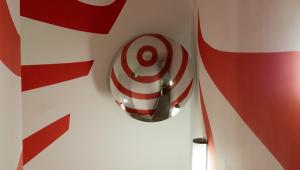OBSERVATOIRE DE L'IMAGINAIRE CONTEMPORAIN
Of Memes, Macros, and the Mainstream
In this paper, we will investigate two advertisements produced by Bell Canada, a major telecommunications company, for their Back-to-School home internet campaign in September 2013. These advertisements took the form of image macros, a type of image which combines text and image in a highly formulaic fashion, governed by organically emergent conventions.
Through careful consideration of the concept of memes, and the ways in which their cultural environments surround their capacity to survive and reproduce in a manner analogous to genes, and detailed observations of certain conventions governing the use and adaptation of image macros in the online environment specifically, we will analyse Bell’s advertising campaign to question whether the inclusion of macros in an offline advertising campaign is an indication that this style of image has successfully exited its initial medium to join the various manifestations of mainstream visual rhetoric. In a brief conclusion, we will carefully consider the impacts of the answer to this research question as it pertains to contemporary communications strategies in the online environment, and induce certain general trends in the changes that these strategies are currently undergoing.
The Objects
In September 2013, Bell Canada released a series of print advertisements in support of their Back-to-School home Internet campaign. The posters included images in the form of internet memes such as “Grumpy Cat” and “Confession Bear” accompanied by text which respected the general conventions of this sort of image macro. These posters appeared at numerous university and college campuses across Canada, and were translated into French, still respecting general conventions of use, for the Quebec market. The appearance of these posters, and their appropriation of a visual rhetoric developed and frequently employed in online discussion communities, would seem to indicate that this style of communication, and the characters and speech patterns on which they depend, have broken free of the world online and have entered the mainstream. In this first section, we will consider a brief history of memes and macros, investigate the rules and conventions governing their use, and consider the communicational effectiveness of these ads as a function of both their visual syntax and their target audience's ability to decipher their message.
Of Memes
The term meme was coined by Richard Dawkins in his 1976 book The Selfish Gene. Dawkins describes a meme as a “unit of cultural transmission”, analogous to the role of genes in the transmission of biological information in organisms. A meme, like a gene, is retransmitted as a function of its fitness for a given environment, and evolves over time as a response to this environment. There are numerous examples of this process of transmission and evolution in the development of cultural norms and expectations and their change over generations. A particularly clear example of transmission of memes can be seen in the fields of heraldry and vexillology, which explore the use of particular colours, shapes, images, and their arrangements in coats-of-arms and flags. For example, the Fleur-de-Lys is still widely understood as the symbol of the French monarchy. It is notably still used today on the flag of Quebec, to denote the province's direct ties to this lineage. The three lions of the Royal Arms of England have been likewise understood as a symbol of the nation of England for many centuries, and this symbol is currently depicted on a variety of English artefacts ranging from the one-pound coin to the crest of the national soccer team. A clear example of the evolution of memes over time can be seen in the world of fashion, specifically the rise and fall in popularity of certain garments over time (the adoption of blue jeans worldwide over the 20th century, or the abandonment of powdered wigs outside of British courtrooms). Many artistic movements are propagated in a manner consistent with Dawkins' conception of memes: to take a literary example, consider the embrace of the natural world and human passion of romanticism giving way to the measured and rational approach of naturalism, or the postmodern subversion of modernism’s industrially-inspired structures.
In the context of the Internet, there are a number of well-known memes which merit a brief mention. These can be broadly divided into visual memes, such as the Dancing Baby, the Star Wars kid, or the Hamster Dance, and textual memes, including utterances such as “In Soviet Russia-”, “Too Damn High!”, and “All Your Base Are Belong To Us”. These memes, particularly those in the textual category, will be discussed in greater detail in the section on macros, but for the moment it is sufficient to understand that these memes typically have a single source and then propagate very rapidly through online communications channels (including e-mail, bulletin boards, and blogs), often resulting in their appropriation by traditional media such as cinema or television. The Internet's capacity to create, consume, and share media objects in many different formats, notably text, image, sound and video, with no particular equipment aside from a standard computer, greatly facilitates both this propagation and the creation of new media objects with the innate potential to go viral. The fact that all viewers or readers of these memes are able to easily adapt existing materials to become creators and broadcasters, the instantaneity of this process, and its extremely low technical barrier to entry, all contribute to the success and growth of memes online.
Just as an ecosystem 1 is composed of many organisms, each composed of many cells, each informed in their tasks and structure by countless genes competing to express themselves, a culture can be considered as a composite of many sweeping ideologies, each composed of many small ideas, each competing with other ideas to ensure their own survival. Cultures and ecosystems are both vulnerable to external shocks such as fire, flood, or invasion. They are likewise both vulnerable to internal shocks: in the case of ecosystems including overpopulation leading to resource depletion or the emergence of a species with no natural predator, and in the case of cultures including artistic or philosophical revolutions. These external and internal factors are interconnected and extremely complex, and though the analogy is too simplistic to be applied on anything but a broad scale, it permits a certain intuition as to the process by which memes propagate: survival of the fittest. The meme that stands the best change of propagating, given the actual conditions of the system in which it finds itself, survives and informs the next generation of memes.
Of Macros
While it is technically appropriate to refer to the Bell images as “memes”, it is more instructive to describe them as “image macros”, a specific subset of memes propagated through the internet which combine a stock image, often of an animal or a cartoon or television character, with superimposed text, generally in white characters in the Impact font. This type of image is widely used on online bulletin board sites, including, but not limited to, Something Awful, 4chan, Imgur, Reddit, and 9gag. The term “image macro” is derived from the computer science term “macro”, designating a computer-readable keyboard shortcut which, when entered by the user, executes a given function2. This style of image is very popular not only due to the ease with which it can be made and distributed (there are several websites which allow users to select a photo and enter their text in a separate field, then composing the image and sharing it automatically), but also its expressive capacity. In the interest of better understanding Bell's use of this style of image in their campaign, it is useful to consider the rules, or more accurately the conventions, governing their composition and use, and those governing the adaptation of a given macro over time.
There are three primary conventions governing the use of image macros on social media and web discussion boards. The first, and most important, is the convention by which certain specific phrases are used in conjunction with certain specific images.
In the above examples, the same stock image of the character Fry, from the Fox animated series Futurama is used, conventionally paired with a sentence beginning in “Not sure if...”. In the examples below, a stock image of the character from Jesse, from AMC’s drama Breaking Bad, is superimposed with the caption “Yeah, Science Bitch”, and is posted in response to news articles containing extracts from scientific journal articles which provide scientific support for the benefits of certain popular lifestyle choices, such as playing video games improving scores on cognitive tests, or whisky providing some measure of protection against certain cancers.
This use of stock phrases and characters in online communities has been the object of study by several researchers, including linguists Geoffrey K. Pullum and Glen Whitman at the University of Pennsylvania, who proposed in 2004 the term “snowclones” to describe such phrases. Their definition of a snowclone is “a multi-use, customizable, instantly recognizable, time-worn, quoted or misquoted phrase or sentence that can be used in an entirely open array of different jokey variants.”(Pullum) Examples provided by Pullum include stock phrases such as X is the new Y, In space no one can hear you X, or, as the inspiration for the term itself, the apocryphal observation that “If Eskimos have 50 words for snow, then group X must have 50 words for Y”. This type of phrase corresponds exceedingly well to the conventional use, among creators of image macros, of an extremely limited repertoire of phrases corresponding to certain images, and instantly recognizable permutations thereof. The cases below have been generated specifically to show the tightest possible correspondence between a stock image and its associated snowclone.
Above and beyond the simple use of stock phrases in conjunction with given images, it is also necessary to understand certain conventions in the visual rhetoric employed by their authors. So far, the macros we have considered all make use of the same style of text: written in all capital letters, in white Impact font, arranged above and below the image, and aligned based on the centre of the image. Other macros, however, use different combinations of font, alignment, and even sentence syntax in support of their semantic goals. For example, the macro referred to commonly as “doge” makes use of brightly coloured Comic Sans font, arrayed haphazardly, along with deliberate spelling and usage errors, in order to capture the distinctive narrative voice of the dog featured in the image. Also worth noting is that in this instance, it is not one specific stock photo which is paired with this text, but rather many photos featuring a specific species of dog (Shiba Inu), a choice which pulls disparate media productions together to provide a certain thematic unity. These inventive ungrammatical constructions, which regularly misspell simple words, make ironic use of modifiers such as “so”, “very”, and “much” followed by incorrect verb tenses or number, intersperse the exclamation “wow”, drop verb subjects and articles, and capitalize words wildly inconsistently, evoke other, older image macros such as “cheezburger cat” (whose iconic question “I can haz cheezburger” launched not only a website and a published book, but gave rise to the term “lolspeak” (Know Your Meme) which was widely adopted not only in the creation of image macros featuring cats and other animals, but more broadly on internet message boards including 4chan). While several researchers have made thorough investigations into the grammatical properties of this style of writing, notably Jordan Lefler at the University of Louisiana at Lafayette (Lefler), for the purposes of this article it is sufficient to understand that in addition to the use of particular stock images, and certain phrasal templates matched to them on an individual basis, the use of grammar and font style, size, and colour are important conventional elements in the construction of contemporary macros.
It is possible, based on these observations, to conclude that these conventions must form a relatively stable visual rhetoric for image macros, resistant to both change and the emergence of new examples. There are also, however, several conventions that surround the adaptation of existing macros in order to say something new. For example, in certain cases, a part of the stock image can be extracted and added to a new, different image, with the extracted element becoming a synecdoche which stands in for the full context habitually given to the text by the full image that typically accompanies it. For example, in the cases below, the marijuana cigarette habitually smoked by the character Good Guy Greg (whose image is accompanied by text describing a social situation in which Greg has behaved in a manner even more considerate of others than would be expected by social norms) is placed in the mouths of other historical figures to describe ways in which these figures have behaved, effectively, as Good Guys.
A similar effect can be observed with Good Guy Greg’s equal and opposite counterpart, Scumbag Steve (who, as the name implies, represents a person who has behaved in a way which transgresses social norms of correct behaviour). Scumbag Steve’s hat can be transposed onto other people or objects to denote that their behaviour, according to the image’s author, is unacceptable.
It is important to note that in both cases mentioned here, not only is a part of the image standing in for the whole of it (requiring the reader to be already familiar with the original image in order to grasp the context in which the text is situated), but that the image directly informs the sense of the text. This is a similar effect to that evoked in Figures 9-13, where the character in the image is both well-known, and whose speech pattern corresponds to a famous line in the TV show or movie with which they are associated: in other words, the sentence in isolation does not have the same semantic impact as it does when paired with its speaker. In the cases of the Good Guy and Scumbag memes, the image implies a value judgement which is not evident in the text: the text read in isolation can be considered a simple recounting of an event which took place or of a fact, but the visual context provided by the image presented in conjunction with it conveys the author’s opinion about the moral or social acceptability of that event or that fact. The semantic power of the image in this situation is made most evident in a case where two macros contain equivalent text, but make use of two separate images, such as in the case presented in Figure 23, where Good Guy Greg and the Socially Awkward Penguin (which, as the name implies, is generally accompanied by a statement describing a socially maladroit action taken by the author/narrator).
This image sequence demonstrates very clearly that with minimal changes to the text itself (limited to a shift from the second person to the third person singular and corresponding changes in verb conjugation), its meaning can be effectively inverted. This effect is the clearest demonstration so far of the principle that it is the image which contextualizes the text as opposed to the text informing the reading of the image, and that the text and image together form a semantic unit which is not only greater than the sum of its parts, but which permits the comprehension of an idea which would take much longer to express in a different form.
More evidence for the importance of the image in determining the meaning of an image macro can be gathered from the conventions surrounding the transformation of macros over time. For example, in the case of Socially Awkward Penguin, the blue background can be replaced with a red background, and the penguin can face in the opposite direction, in order to convey the opposite meaning: the Socially Awesome Penguin. This process can then be repeated, by stitching together one half of the Socially Awkward Penguin and the other half of the Socially Awesome Penguin, to create a macro that describes either a social situation that began maladroitly and ended positively, or conversely one which began positively and ended in embarrassment.
A similar principle can be observed at work with regards to the Actual Advice Mallard (which is a photo of an ordinary Mallard duck accompanied by text providing some sort of good advice) and its counterpart the Malicious Advice Mallard (which alters the photo such that the duck’s head is red rather than green, and provides incorrect or dangerous advice). In both cases, the image, and whether or not the image has been manipulated, informs the meaning of the text, and consideration of both the text and the image is necessary to understand the author’s meaning. This consideration must likewise be informed by an understanding of the conventions surrounding the base image (in the case of images such as Figures 9-13 knowledge of the character depicted, and in the case of those such as Figures 17-22 familiarity with the initial image and the typical context of its use) as well as those conventions surrounding their evolution and adaptation.
So far, we have examined the ideas of memes and macros to determine that image macros are a successful meme within the cultural space of online message boards, in so far as their use of text and image in concert and their ease of creation and transmission allow users to express complex ideas that would not be expressible otherwise to a global audience. We have also seen that like many other forms of cultural transmission their use is governed by conventions that provide a context for the reading of these images by their target audience. Knowledge of these conventions, in addition to providing the basis for the use and propagation of these macros, therefore also provides the basis of the cultural community that makes use of this form of visual rhetoric to communicate amongst themselves. While the question of how new macros, those not related to known fictional characters or simple adaptations of existing common macros, become popular is a fruitful field for further exploration, but it is outside the field of inquiry of this article. For the moment, however, we are in possession of a great deal of the relevant information to formulate a response to our first research question: does Bell’s use of image macros in an advertising campaign constitute evidence that this form of communication has entered the mainstream?
Of the Mainstream
To respond fully to this question, there is one last missing element: a definition of what we mean by mainstream. To determine this definition, it is helpful to compare and contrast two competing definitions of the mainstream as it pertains to media culture. The first is that of the traditional mainstream, defined by Darin Barney in his book The Network Society, and rooted in a 20th century conception of broadcast media:
broadcast radio and television provided media through which a mass culture of consumption could be manufactured, and the quasi-scientific practices of opinion polling, market research and advertising, provided means for the management of the mass audience and market. (2004: 12)
This mainstream is therefore an emergent property of a constant feedback loop: the largest broadcasters transmit a certain sort of cultural content, and in the absence of fair competition from smaller groups, this cultural content informs the expectations of the audience. These expectations, in turn, inform media executives when it comes time to decide what sort of media will be broadcast in the future.
A much more contemporary understanding of the mainstream, however, emerged from the Post-Fordist model which began to gain traction in North America and Western Europe in the 1960s. This cultural tendency marked a rejection of the assembly-line, standardized industrial logic which was also applied to cultural sectors including radio and broadcast television, in favour of an ethos of “mass customization” (Barney, 2002: 14) where media consumers demanded progressively greater and greater control over the media they consumed. In terms of television, for example, this trend paralleled an explosion of cable networks and satellite stations, offering greater opportunities for media consumers to access cultural content which corresponded more closely to their own interests. This tendency reached its fullest expression, to present, in the age of the Internet: in the absence of traditional broadcasters controlling and determining the content of the medium, users are free to seek out websites, message boards, and communities which correspond to their existing interests, as opposed to developing interests in the cultural productions chosen for them by broadcasters.
The Internet's capacity to create, consume, and share media objects in many different formats, notably text, image, sound and video, with no particular equipment aside from a standard computer, greatly facilitates both this propagation and the creation of new media objects with the innate potential to go viral.
Advertisers, of course, have altered their approach as a function of this new ethos of individual control over media consumption. In addition to taking out advertisements during popular programs in traditional mass media, advertisers such as political parties are making increasing use of microtargeting their messages to the specific groups who are most likely to be receptive to them. The American journalist James Verini, writing in Vanity Fair in 2007, described the processes by which consulting groups such as Aristotle, Inc. collect personal information from Internet users to compose a profile including their browsing habits, political leanings, and even their age and occupation, in order to allow their clients, composed in this case of political parties, to target advertisements to the individual users who are most likely to consider their platforms and vote for them on election day. Google, of course, also makes use of the information it gathers about its users to allow advertisers to target their messages to the specific subset of users most likely to appreciate them.
In this instance, it is clear that Bell is targeting a specific cultural community, but ignoring the insights offered by modern online microtargeting. On the side of the advertisement itself, the fact that the purchase of the product they are selling, a home Internet connection, is being incentivized by an offer for free bandwidth that is only available to students, immediately and evidently defines their target group. The physical placement of the advertisements in colleges, universities, and bars close to campuses further cements the evident targeting of this group. It is therefore obvious that Bell is not engaging in a process of popularization of this style of visual rhetoric by introducing it into the mainstream of public discourse, but rather appropriating a style presumably familiar to their targeted group in order to create the impression that the company is a part of the community. By offering this campaign through traditional media, Bell are utilizing a style of image which has emerged organically from a medium that heavily emphasizes the targeting of messages to individuals and the capacity of the reader to respond to the messages he or she sees as part of a traditional mass marketing campaign. Far from bringing the semantic richness of macros into the mainstream, this campaign merely appropriates the style of these images, while ignoring their substance.
This initial question answered, we can move on to a wider consideration of our second, less obviously answered, research question: “What can this case study tell us about contemporary communications strategies?” As mentioned in our initial section on memes, just as the physical environment is crucial to the fitness and reproduction of genes, the cultural medium in which a meme exists is crucial to its success and propagation. This insight opens a first critique of Bell’s use of macros in its print advertising campaign: once these macros are removed from their natural context, they become less fit for their environment. Image macros, removed from the Internet, lose both their generative capacity (which is to say, observers of these macros are not able to create their own versions and share them on an equal footing with the initial macro, nor are they able to perform palette swaps or other alterations to change their meaning) as well as their reproductive capacity (which is to say, they cannot go viral and be seen by millions of viewers in a short timeframe without being remediatized through the Internet). Whereas Bell successfully appropriated the visual rhetoric of these images in the attempt to claim membership in a cultural group, by removing from the Internet, they effectively robbed their own macros of the qualities that make them so popular among this group in the first place.
Indeed, both the form and the content of image macros are heavily influenced by the medium in which they propagate. The form of these macros is heavily influenced by the capacity of computers to manage many different types of media, including image, text, audio, and video, without requiring any special equipment or skill above and beyond commonly available software. The barrier to entry to the creation of these images is therefore extremely low: anyone with the ability to read these images online already has in their possession everything needed to make their own. Before digital manipulation of these images was possible, the stock image would have needed to be physically reproduced, through printing or more recently photocopying, before applying text, and after text was applied reproduction of the underlying image would have become much more difficult. Digital manipulation makes the mass production, and more importantly the mass customization of these images, possible. As for the content of these macros, it too is heavily influenced by the qualities the ecosystem of the Internet: because any user that can access this type of image can make their own, and because the costs of transmitting the image are negligible, there is effectively no barrier to the creation and spread of new macros. Whereas before the Internet, a reader would need to obtain special equipment to print their macro (and, as mentioned, would need to obtain a physical copy of the original as well as a typeface allowing them to reproduce the same font, colour, and spacing) and then incur massive printing and shipping costs to diffuse it worldwide, the existence of the internet makes this process so trivial that pictures of dogs wearing scarves and commenting on their own fashion sense are viewed by thousands of people daily. When it costs nothing to reproduce an image or a piece of text, quality control is simply not worth the effort.
This observation, then, that the medium matters, in conjunction with our analysis of the conventions that surround the use and alteration of image macros, allows us to induce certain qualities of contemporary communications strategies within this medium, especially as these strategies contrast with actual use of macros in Bell Media’s campaign. To begin with, we can again very briefly summarize the observed characteristics of macros shown in our previous examples: they emerged from a participatory medium where readers are encouraged to become authors and where the barrier between these two categories is extremely fluid, they make extensive use of an informal register to communicate their messages, they make use of both stock characters and stock phrases in predictable ways, and they place their emphasis on the unique recombination of existing semantic elements rather than the creation of new ones. These qualities are not unique to image macros, and in fact parallel very closely some of the observed characteristics of oral cultures as described by Walter Ong in his book Orality and Literacy. Ong proposes that the presence of these characteristics in contemporary media suggests a sort of “secondary orality” (Ong, 2012: 11), which makes use of communications strategies present in oral cultures within media that depend on print for their existence.
In Ong’s analysis, he is concerned primarily with the dichotomy between text and speech, and his theory of secondary orality is an attempt to reconcile contemporary uses of the informal register in text with older, more traditional concepts of textual communication which prioritise a more formal register and which place emphasis on the individual creativity of the author, while also accounting for the importance of text in oral communication mediatized through broadcast channels such as television and radio. While this analysis in fact predates the mass adoption of the Internet, and its semantic culture based on participatory practices and mass sharing of content, his reflection provides a useful starting point for a reconciliation of the use of text and image in concert as demonstrated by macros. As previously stated, text and image are inseparable in the context of macros, and this combination is a product of the computer’s capacity to manipulate text and images with equal ease. It is therefore possible to propose a new sort of orality that, while maintaining some of the participatory, permutative, and recombinatory qualities of oral traditions, integrates visual imagery into its rhetoric as a necessary component in the construction of meaning.
This visual orality, which depends on a robust, visual semantic system, generates many new opportunities for creative expression that would be impossible in other media. There are numerous examples of this type of communication outside the world of image macros: notably, the prevalence of images with text superimposed which appear frequently on social media applications such as Instagram, where the text informs the sense of the image, the combination of subject titles paired with images on discussion forums such as reddit, where viewing the image contextualizes the title often to ironic effect, and the reposting of images along with their comment threads on social platforms such as Tumblr, where the commentary following the initial posting of the image is recuperated into a new image, which combines the original and its comments, and where the text and image mutually reinforce the meaning of the new object. None of these styles of image were widely used before the advent of the Internet, due to the strong barriers to entry on the side of authors, and the strong barriers to reproduction for both current and potential authors. As the technology behind the Internet matures, and as more and more people connect to it, an astute observer of online culture aware of this visual orality would expect to see an increasing share of online communication making use of text and image together, increasing adoption of the oral register in the text that is produced in conjunction with these images, and the creation of new tools that aim specifically to help users express themselves through these new forms. The early success of platforms such as memegenerator, the trend away from emoticons formed from textual characters towards specifically-created images such as emoji, native support in bulletin board software for users to post images, and the increasing popularity of image-based networks such as Tumblr and Instagram relative to the more textually-oriented Facebook and Twitter can all be considered evidence of this trend.
Ultimately, Bell’s use of image macros outside of their proper context demonstrates the crucial importance of the medium in the success of this type of a meme, and opens the door to a fulfilling analysis of the expressive power of text and image when taken together. It provides further support for the notion that one of the key advances made possible by the computer is the easy manipulation of cultural content in many different forms, including text and image, but also audio and video. It likewise provides support for the contention that the major interest of the Internet as a new form of communications media is its decentralization and the erosion of the barrier between authors and readers, allowing users to take on the role of either one as appropriate. Just as taking a fish out of water allows for an understanding of the role of the water in the success of the fish, removing a macro from its natural medium provides a unique look at the role that medium plays in the complex system of ideas which lives within it.
Bibliographie
Barney, Darin. 2004. The Network Society. Cambridge: Polity Press, 216 p.
Dawkins, Richard. 1989. The Selfish Gene. New York: Oxford University Press, 352 p.
Ong, Walter J. 1982. Orality and Literacy: The Technologizing of the Word. New York: Routledge, 232 p.
Kim, Brad. 2008. Know Your Meme. <http://knowyourmeme.com/>.
Lefler, Jordan. 2011. «I can has thesis?: A Linguistic Analysis of Lolspeak». Linguistics, Louisiana State University and Agricultural and Mechanical College, 129 f. <http://etd.lsu.edu/docs/available/etd-11112011-100404/>.
Pullum, Geoffrey K et Glen Whitman. 2004. «Snowclones: Lexicographical dating to the second». Language Log, 26 février 2014. <http://itre.cis.upenn.edu/~myl/languagelog/archives/000350.html>.
Pullum, Geoffrey K et Glen Whitman. 2003. «Phrases for Lazy Writers in Kit Form». Language Log, 16 juin 2014. <http://itre.cis.upenn.edu/myl/languagelog/archives/000061.html>.
Verini, James. 2007. «Big Brother Inc.». Vanity Fair, 16 juin 2014. <http://www.vanityfair.com/politics/features/2007/12/aristotle200712>.
Wiszniowski, David. 2014. «Exploring the Marketability of Memes». Research Through Gaming, 16 juin 2014. <http://www.researchthroughgaming.com/gaming/exploring-the-marketability-....
- 1. It is worth noting that other definitions of “ecosystem” are often used interchangeably in the digital environment. In the context of this paper, the word “ecosystem” is used for its metaphorical value in describing an open-ended system composed of many discrete entities which demonstrates characteristics not necessarily found in any of its parts, and not to denote specifically a collection of texts or objects hosted on a single domain or published by a single publisher, nor to describe a particular development environment or operating system.
- 2. Notable examples include the usage of the Control and X keys to cut a section of text, Control and V to paste text, or Control, Alt, and Delete to call the system's task manager.
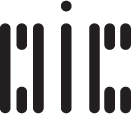
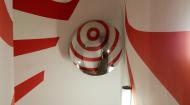
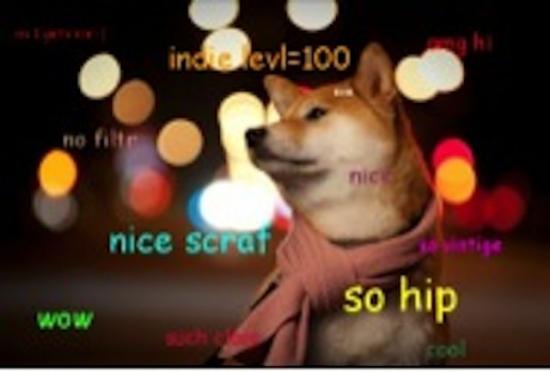
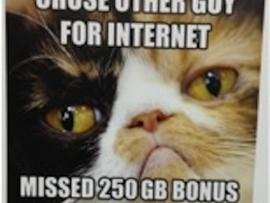
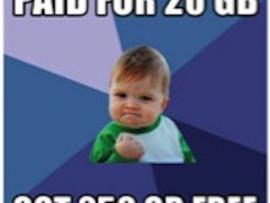

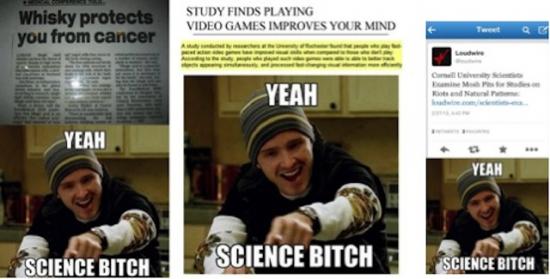
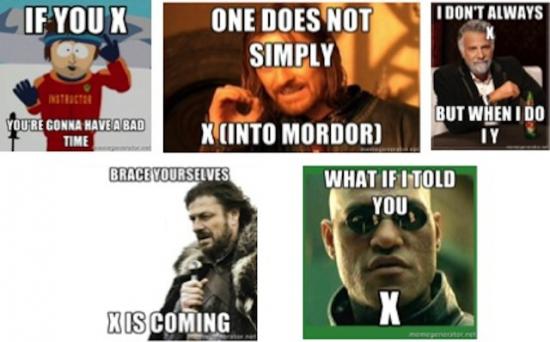

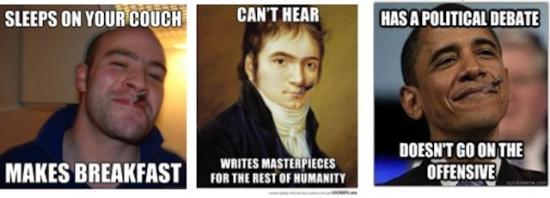



![Unknown author, Unknown year. "Socially Awesome/Awkward Penguin" [Photomontage]](../../sites/oic.uqam.ca/files/styles/large/public/images/awesome-awkward_0.jpg%3Fitok=hx6J7euN)
